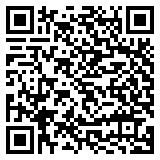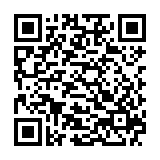The Rise of Machine Translation
Machine translation (MT) has come a long way from the early days of clunky, error-filled text. Today, tools like Google Translate, DeepL, and Microsoft Translator use artificial intelligence (AI) and neural networks to produce translations faster than ever. But while MT can be a powerful tool, relying on it without quality control can lead to embarrassing mistakes.
So, how can businesses, translators, and content creators use machine translation effectively without sacrificing accuracy and quality? Let’s dive in!
Understanding the Strengths and Weaknesses of Machine Translation
Before using MT, it’s important to know where it excels and where it struggles.
✅ What MT Does Well:
- Speed – Translates large volumes of text instantly.
- Basic Communication – Useful for informal conversations and general understanding.
- Cost-Effective – Reduces the cost of translation, especially for large-scale projects.
- Works Well for Structured Content – Best for predictable, repetitive text like user manuals, product descriptions, and FAQs.
❌ Where MT Falls Short:
- Context and Nuance – Struggles with idioms, humour, and cultural references.
- Grammar and Syntax Issues – May produce awkward or unnatural phrasing.
- Industry-Specific Jargon – Technical, legal, and medical texts often require human expertise.
- Cultural Sensitivity – Can mistranslate or misinterpret content, leading to offensive or misleading messages.
💡 Example:
In 2017, Facebook’s machine translation wrongly translated a post from Arabic to Hebrew, causing unnecessary panic and even leading to an arrest. Mistakes like these show why human oversight is crucial!
Best Practices for Using Machine Translation Effectively
1. Choose the Right Machine Translation Tool
Not all MT tools are the same. Some are better suited for specific languages and industries.
🔍 Popular MT Tools & Their Strengths:
- Google Translate – Best for general translation, supports 130+ languages.
- DeepL – Produces more natural-sounding translations, especially for European languages.
- Microsoft Translator – Integrates well with business applications like Microsoft Office.
- Amazon Translate – Designed for enterprise-level cloud-based translation.
💡 Pro Tip: If translating technical content, consider MT engines that allow for customization (e.g., DeepL Pro, Google AutoML).
2. Use Pre-Editing to Improve Accuracy
Before running text through an MT engine, simplify and structure it properly.
✅ Pre-Editing Tips:
- Use clear, concise sentences – Avoid long, complex sentences.
- Avoid slang and idioms – MT often mistranslates informal expressions.
- Check for spelling and grammar mistakes – Errors confuse the MT engine.
- Use consistent terminology – Helps MT maintain accuracy across the text.
💡 Example:
Instead of:
❌ “It’s raining cats and dogs, so bring an umbrella.”
Try:
✅ “It’s raining heavily, so bring an umbrella.”
3. Post-Editing: Human Review Is Key
Even the best MT output needs human post-editing to refine accuracy.
👩💻 Two Types of Post-Editing:
- Light Post-Editing – Fixing only major errors, good for internal documents or quick translations.
- Full Post-Editing – Ensuring the text is fluent, natural, and accurate, essential for marketing, legal, and professional content.
✅ What to Check in Post-Editing:
- Grammar & Syntax – Ensure natural sentence structure.
- Terminology Consistency – Maintain industry-specific vocabulary.
- Cultural Sensitivity – Adapt idioms and local references.
- Readability & Tone – Make sure it sounds human!
4. Use Hybrid Translation: MT + Human Expertise
For high-quality translations, a hybrid approach works best—combining machine efficiency with human expertise.
📌 How It Works:
- MT translates the bulk of the text – Fast, cost-effective initial translation.
- A professional translator reviews and refines the output – Ensures quality and accuracy.
- Final proofreading – Guarantees a natural, polished result.
💡 Example:
Many global companies (like Amazon and Netflix) use MT for subtitles but rely on human editors to perfect translations for different cultures.
5. Train MT Engines with Custom Data
Some MT platforms allow businesses to train the AI with industry-specific terminology. This improves accuracy for specialized content.
⚙️ How to Train an MT Engine:
- Upload glossaries and translation memory.
- Provide company-specific terminology.
- Continuously update the system with corrected translations.
💡 Example:
A medical company can train an MT model to recognize technical terms like “cardiovascular disease” instead of mistranslating it as “heart sickness.”
Final Thoughts: Finding the Right Balance
Machine translation is a powerful tool, but it works best when paired with human expertise. By using pre-editing, post-editing, hybrid translation, and custom-trained engines, businesses can enjoy fast, cost-effective translations without compromising on quality.
So, next time you use machine translation, remember: it’s a tool, not a replacement for human translators!





0 Comments